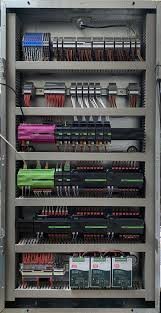Hi All,
Here are a couple of photos of panels that are now appearing in homes with some regularity.
Where they are actually signed off, that is invariably being done with an EIC’s and the installations notified under Part P in the usual manner.


I have yet to speak to a ‘smart home installer’ or Electrician that sees much of an issue here.
One of the manufacturers of the components in these two images actively ‘trains’ installers that this is acceptable and when challenged state ‘it is not their remit to tell Electricians how to do their job’
Given that BS7671 is not a product standard how could it be adapted to fit emerging technologies and installations?
Alternatively, how do we ensure Electricians are not wittingly or unwittingly placing themselves at risk from such installations.
I spoke to both NICEIC & NAPIT Technical on such installations in respect of the requirements for their Approved contractors / Domestic installers etc etc.
Neither one had any clue what I was talking about.
Thanks
Martyn